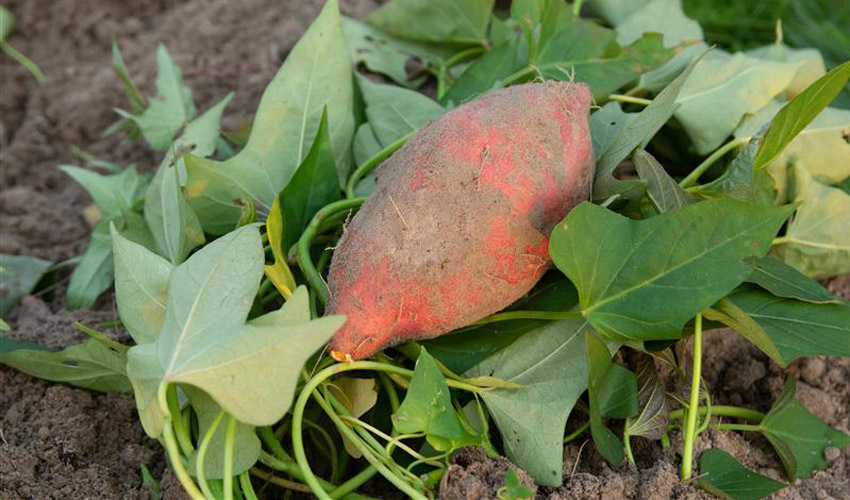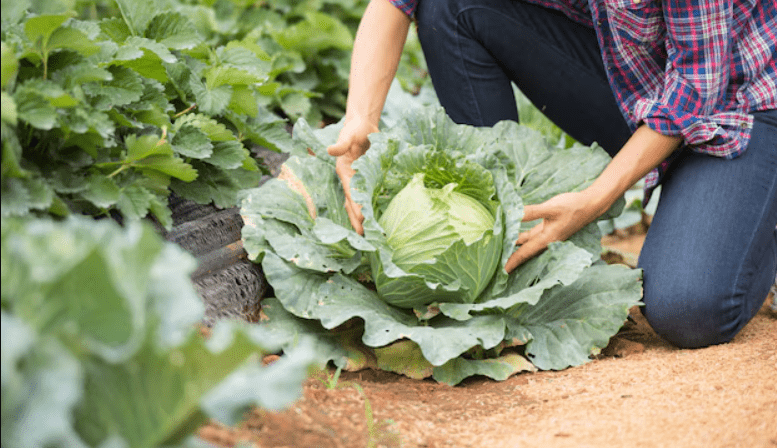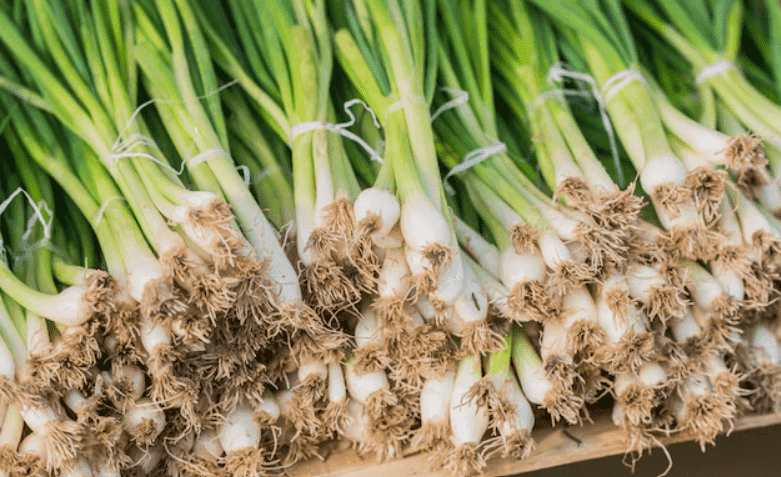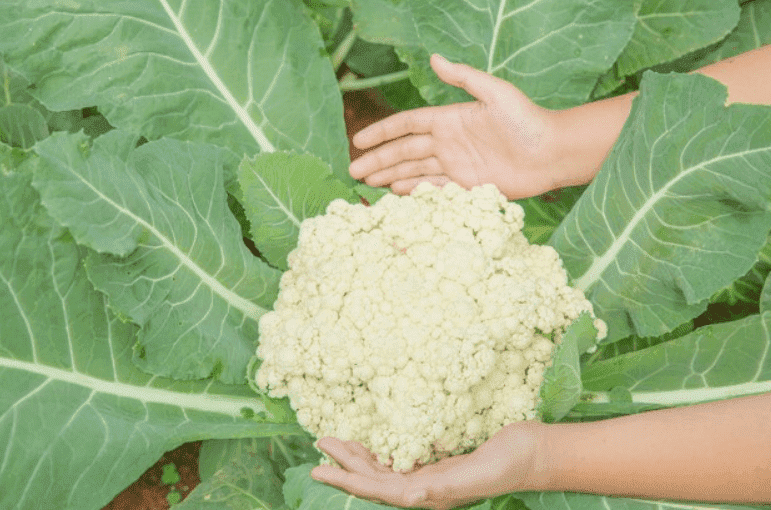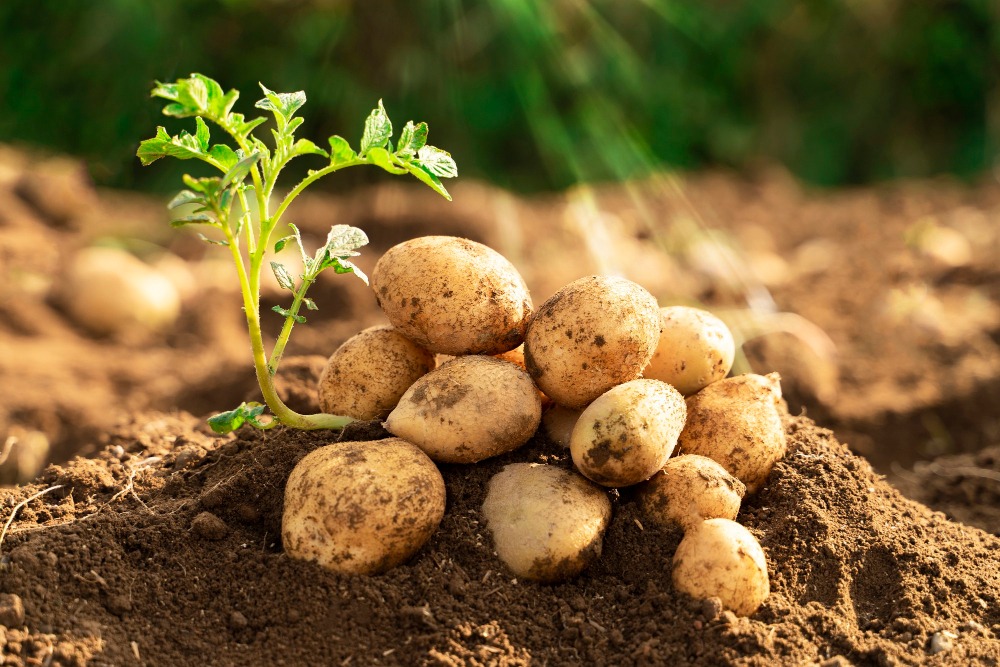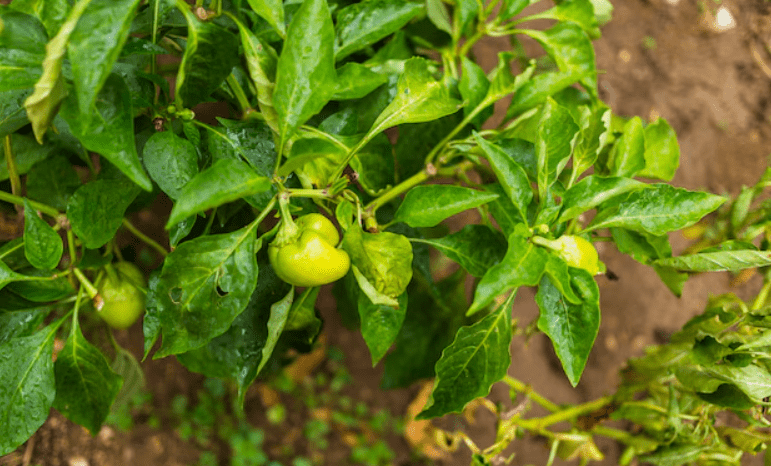Sweet potatoes are becoming a popular crop to grow in the home garden, as they are a tasty alternative to white potatoes and offer unique qualities. Unlike potatoes, sweet potatoes are part of the morning glory family (Convolvulaceae). These fast-growing, climbing plants produce trailing vines that can reach up to 1.5 meters and develop red, white, or purple tubers that resemble traditional potatoes in shape.
Sweet potatoes are naturally sweet in flavor and are packed with essential nutrients rich in vitamins A and C, as well as loaded with carotenoids, potassium, and fiber. They’re incredibly versatile in the kitchen and can be boiled, roasted, turned into chips, or used in a variety of dishes. Even the shoots and leaves are edible and can be cooked like spinach.
With their fresh green, heart-shaped foliage and ornamental appeal, sweet potatoes are also an excellent choice for decorative gardens or growing indoors in a conservatory.
Table of Contents
ToggleWhere to Grow Sweet Potatoes
Sweet potatoes thrive in warm conditions. They grow best in a greenhouse, either in large containers or directly in the greenhouse border, where the warmth and shelter support better yields. While it’s possible to grow them outdoors, the harvest is often smaller compared to plants grown under protection.
If you’re limited on space, the long, trailing vines can be trained to climb up structures like an obelisk or a wigwam made from bamboo canes, helping keep the plant tidy and productive.
In warmer regions, it’s possible to grow sweet potatoes directly in the ground. Select a bright, sheltered spot and pre-warm the soil using black polythene. Once the soil is warm enough, cut a hole in the plastic and plant the sweet potato slip. The polythene helps retain heat, improving your chances of a successful crop in outdoor conditions.
How to Plant Sweet Potatoes
Sweet potatoes are commonly grown from shoots called slips. Place the slips in a jar of water for a few days to help them rehydrate and regain strength.
After they perk up, transfer each slip into a small pot filled with moist, peat-free, multi-purpose compost. Bury as much of the stem as possible to encourage strong root growth along the buried portion. To create a warm, humid environment for rooting, cover the pots with a transparent plastic sheet or set them in an unheated propagator. Once the slips have rooted and begin to show new growth, they’ll be ready for planting out into their final growing space.
Growing Sweet Potatoes Outside
When learning how to grow sweet potatoes, Start by preparing the soil. Clear weeds and improve the soil with organic matter. Once the soil is ready, lay black polythene over the area to help warm the ground and keep weeds under control. The earlier you apply the plastic, the more heat the soil will retain.
After the last frost, gradually harden off your sweet potato plants by exposing them to outdoor conditions a little more each day. When they’re ready, cut holes in the polythene roughly 30 cm apart and plant one sweet potato slip in each opening.
To help maintain warmth as the plants establish, consider covering them with a cloche or row cover, especially during cooler nights.
Growing Sweet Potatoes Undercover
Sweet potatoes grow exceptionally well when cultivated under cover, such as in a greenhouse, polytunnel, or a warm conservatory. For best results, plant them directly into well-prepared soil in the greenhouse border, leaving about 30 cm between each plant. Unlike outdoor planting, there’s no need to warm the soil with polythene when growing indoors.
Alternatively, you can grow sweet potatoes in large containers filled with peat-free, multi-purpose compost that has been improved with well-rotted manure or compost. Space the plants 30 cm apart, and if using individual pots, ensure each one is at least 30 cm in diameter—one plant per pot is ideal. This method provides the roots with ample space to develop and fosters strong, healthy growth.
How to Care for Sweet Potatoes
Keep your sweet potato plants well-watered, especially during dry spells, to support healthy tuber development. Feed them every two weeks with a high-potash liquid fertilizer, such as tomato feed, to encourage strong growth and better yields.
To promote a fuller, bushier plant, pinch out the tips of long vines as they grow. If you’re training the vines vertically, gently tie them to their support to keep the plant tidy and well-structured.
How to Harvest Sweet Potatoes
You can begin harvesting sweet potatoes once the roots have grown large enough to eat. Typically, they’re ready around 100 days after planting or when the leaves and tips of the vines begin to yellow. This is a sign that the plant is entering a state of dormancy.
To harvest, start by gently loosening the soil around each plant, working about 18 inches out from the center and 4 to 6 inches deep to avoid damaging the tubers. Trim back some of the vines, then carefully pull up the central crown and dig around it by hand. Sweet potatoes bruise easily, so handle them with care.
Gently brush off any loose soil, but don’t wash the roots. Complete your harvest before the first fall frost, as cold temperatures can harm the tubers and reduce their storage life.

